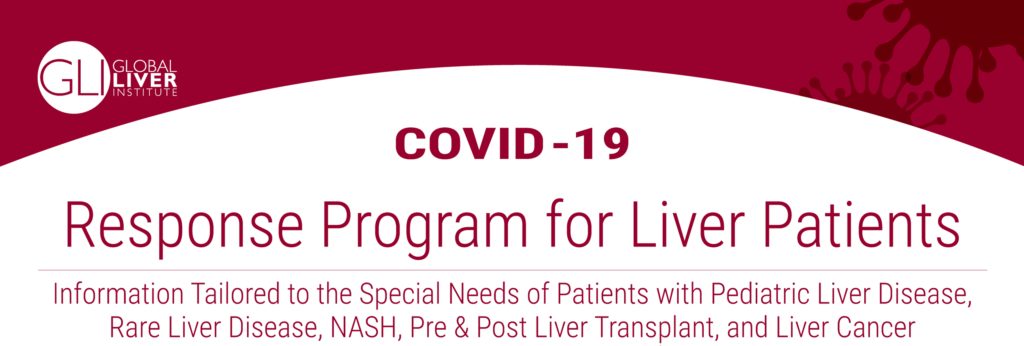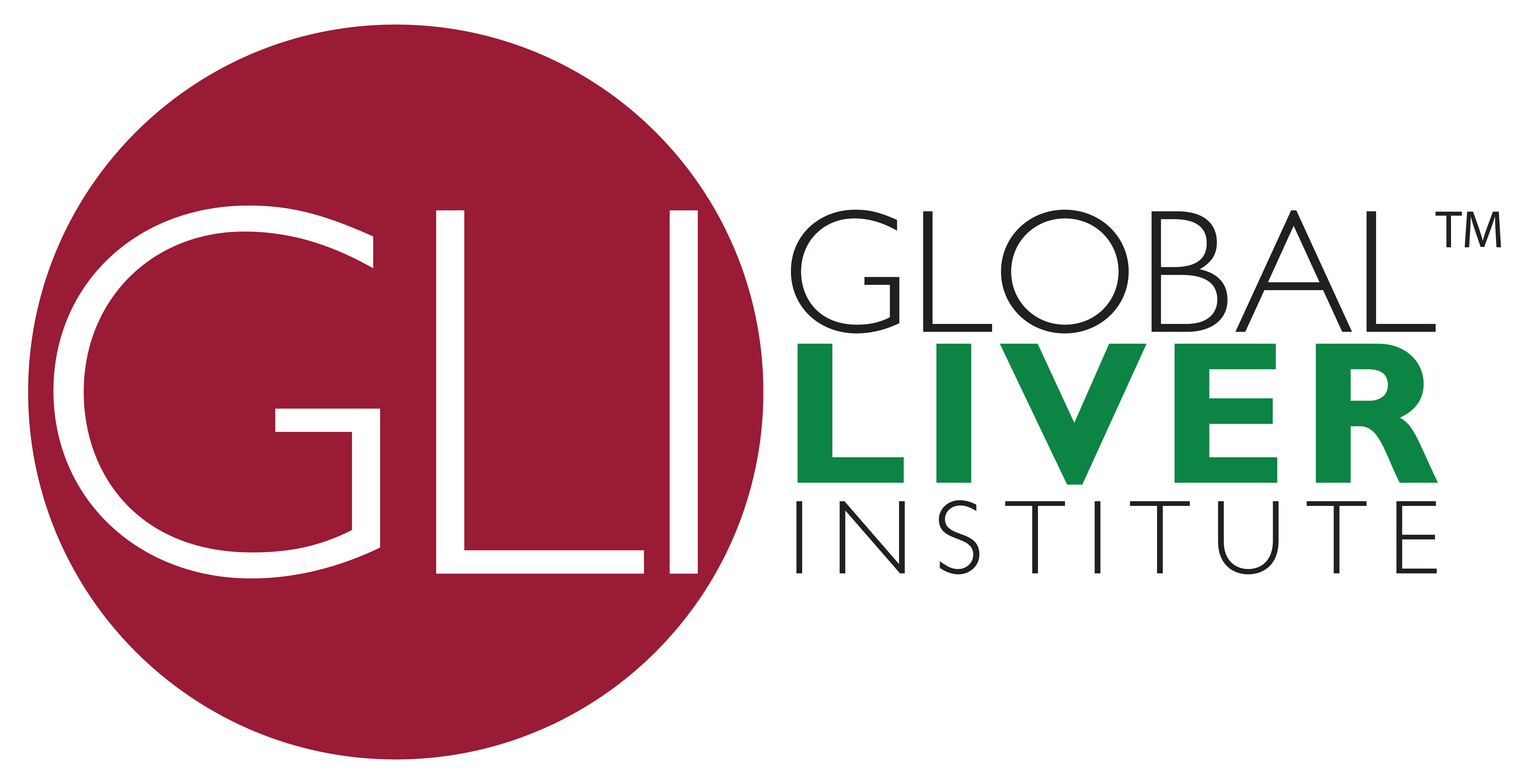
Although all humans appear susceptible to infection by the COVID-19 virus, some communities and some racial and ethnic groups are infected, experience greater illness, and are hospitalized at rates higher than other groups, and are more likely to die. The disparities in infection, illness, and death are not just based on race or ethnicity, but may also be related to economic status, employment, housing, and health history. In this COVID-19 Update, GLI has collected information on disparities within the U.S. in the incidence and prevalence of the virus and reports information on
- Current Patient Data,
- Causes Associated with Infection, and
- Related Organizational and Policy Actions.
This update expands on the GLI LIVE interviews on Nursing, COVID-19, and Communities of Color with Martha Dawson and Getting Good Liver Care During COVID-19 with Dr. Rajarshi Banerjee. We also invite you to tune into our upcoming GLI Live interview with Daniel Dawes, health care attorney, advocate, and author of 150 Years of Obamacare and The Political Determinants of Health.
There have been major disparities in the spread of and response to COVID-19. While everyone is susceptible to the virus, certain communities are being impacted disproportionately. While it was recognized early in the pandemic that older adults and those with certain pre-existing health conditions like obesity and diabetes as well as frontline workers and essential workers as well as those living in group settings such as nursing homes and prisons were at higher risk, little data was collected by race, ethnic origins, or demographic characteristics of infected patients. As a result, it was not evident initially that the virus was affecting some communities at higher rates and persons in those communities were at higher risk of infection, illness, and death. Without recognition of who is at greater risk, individuals, community leaders, healthcare professionals, and policymakers did not concentrate preventative measures on the at-risk populations. It was not until the New York Times sued the CDC that they released vital data showing the massive racial inequalities of COVID-19. This data is extremely valuable because it shows what many minority-serving medical associations, physicians of color, and community activists have already known and it pushes state and federal COVID-19 interventions and prevention efforts to become more targeted.
Racial Disparities
Currently, 49 U.S. states and territories are reporting positive cases based on race and 48 U.S. states and territories are reporting deaths based on race. The COVID Tracking Project has created a Racial Data Tracker which compiles and analyzes racial data from each state and territory. This is an excellent resource for understanding the spread and impact on minority communities. While this shift in reporting is a necessary and positive change, important data is still lacking. Additionally, not all states reporting racial breakdowns are doing so in a way that is reflective of the population. Some are only categorizing cases as “white,” “black,” and “other,” which fails to account for Native American, Asian American, and Latino communities.
Current Patient Data
There are significant trends in the rates of COVID-19 cases and deaths which indicate that minority communities are overrepresented in those indicators. While the data is quickly changing across all metrics, there are a few stark examples that indicate how severe COVID-19 disparities are in the United States. The first is the mortality rate of Black populations. While Black persons make up 13% of the U.S. population, they comprise 24% of current COVID-19 deaths, based on deaths where race is known. This major disparity is also seen among Native American communities. The Navajo Nation currently has the most COVID-19 cases per capita, recently surpassing both New York and New Jersey. In New Mexico, Native Americans are only 9% of the population but are 60% of COVID-19 cases.
Causes Associated with Infection
The roots of these disparities are evident in systematic issues faced by many communities, including poor living conditions, working conditions, and limited access to healthcare. Communities with lower socioeconomic resources have frequently been seen as hot spots for the spread of the COVID-19 virus. This is particularly evident in places of high density and overcrowding as well as communities that lack access to running water. If communities are densely populated, it can be exceptionally difficult to practice social distancing and to isolate individuals who have been infected. Across the country, there are 2.2 million people who do not have easy access to water or indoor plumbing. This is evident in Native American communities which are 19 times more likely to face this challenge, and Black and Hispanic communities which are twice as likely to lack this basic access. This creates barriers to good hygiene which is essential to prevent the spread of COVID-19. Not only has this been a contributing factor in the U.S., but also has been seen in migrant communities across Europe.
Jobs and working conditions have also played a role in creating massive COVID-19 disparities. We are now recognizing how reliant we are on essential workers and how important they are for services and the economy. People in this part of the labor force are often low paid and have few or no benefits; they do not always have the luxury to work from home and protect themselves from virus infection. One result is greater exposure to COVID-19 as workers continue to go to jobs and interact with others. Many essential works do not have the option to take paid sick leave if they become sick or are infected, which forces them to continue to work and potentially expose others. Members of minority groups are over-represented in essential jobs.
There is also a disparity in access to healthcare among both minority communities and persons who have a lower socioeconomic status. There is a greater proportion of Hispanics and Blacks who do not have health insurance, which makes it difficult to receive important and necessary care. This can increase the prevalence of underlying health conditions, like diabetes, a risk factor for COVID-19 hospitalization and death. This is supported by data that shows there is a higher prevalence of cases and of resulting deaths from chronic health conditions in minority groups. As we have seen, the presence of pre-existing conditions can lead to a more severe COVID-19 infection.
Organizational and Policy Actions
As advocates, how can we reduce these disparities? There are changes that we can make within organizations and on a larger scale. The first is collecting data. While there has been an increased focus on collecting demographic information, it needs to be scaled up. It is not possible to make informed and impactful decisions when critical information is lacking; having that information ensures that resources are focused on the most vulnerable communities. When we have information on disease concentrations, we can then increase the availability of testing, make testing free in those locations or offer the convenience of drive-through sites. Not only should testing be increased in these particular communities, but also targeted to essential workers in general. Workers in higher-risk fields who may have greater exposure to infected individuals or the general public should also have ready access to free testing and they should be encouraged to be tested frequently. Robust contact tracing is also needed to understand how the virus is spreading and to alert those who are potentially exposed. Contact tracing can help contain community spread in areas where there may be less access to testing.
Improving employee rights is also critical for reducing disparities and protecting the hardest-hit communities. Employers should implement strict safety measures to protect employees and the public and limit potential exposure, as well as provide robust sick leave options and guaranteed full pay if they are unable to work due to COVID-19. In addition to protecting essential employees in the workplace, there must also be childcare options available to enable essential employees to continue working. With schools and daycare centers largely closed, those who rely on these services are now left with few options. This is particularly important for minority and low-income communities who may rely more heavily on care programs that are offered through schools or non-profit organizations. This can contribute to the disparities faced by these communities as they work to balance staying healthy and safe while also working and providing for their families. Organizations can do more to create long term changes in company culture and disparities by creating groups or committees within organizations that focus on accountability, equity, and opportunities for minority populations inside and outside the organization.
The issue of health care inequality also needs to be addressed. Free clinics that are easily accessible and located in highly impacted communities are a great place to start in addressing this systemic issue. It is essential to Work with communities to address the needs of individuals with pre-existing conditions who are at higher risk of COVID-19. Being able to receive care without fear of medical debt by implementing universal health care would accelerate our ability to overcome this inequality. We also need to educate our healthcare professionals about the barriers to care that are present in these communities and provide them with the skills and resources to help break those down. Healthcare organizations, like Medicaid, can also step up and make changes to mitigate disparities. They can create strategies to improve outreach and communications with minority communities, including targeting these efforts to communities where disparities are concentrated.
Outside of healthcare strategies, there are community-based efforts that can help reduce disparities. Ensuring that federal and state COVID guidelines are clear will permit everyone to better educate and protect themselves. For example, having materials published in a variety of languages will reach a broader audience. There can also be efforts to provide housing options for those who must quarantine but who are unable to isolate themselves due to lack of housing or housing overcrowding. With most hotels operating at zero or limited occupancy, the state or local governments could contract out hotel rooms to provide safe places to quarantine. This could be beneficial for those experiencing homelessness, a community with high infection rates, or those who lack a place in their residence, including those in subsidized housing, to isolate from other family members.
The disparities of certain groups and communities that are being affected with higher COVID-19 cases, hospitalizations, and death have highlighted the systemic issues and barriers that are present in the U.S. While we applaud those working to correct the systemic issues of race, ethnicity, employment status, and access to healthcare and quality housing that drive disparities, there is still a great deal of work to be done. A more successful response to the pandemic in the U.S. is dependent on our ability to identify and then also protect those at risk and prevent the disease among those who have the greatest exposure and vulnerability. Only through recognition of the COVID-19 disparities and implementation of policies and practices to safeguard risk communities will they be spared the brunt of the disease, the overall rate of infection be reduced, and the economy be able to reopen.
Stay safe, well, and connected.
Sincerely,

Donna R. Cryer
Founder & CEO
Liver Transplant 1994 Johns Hopkins


